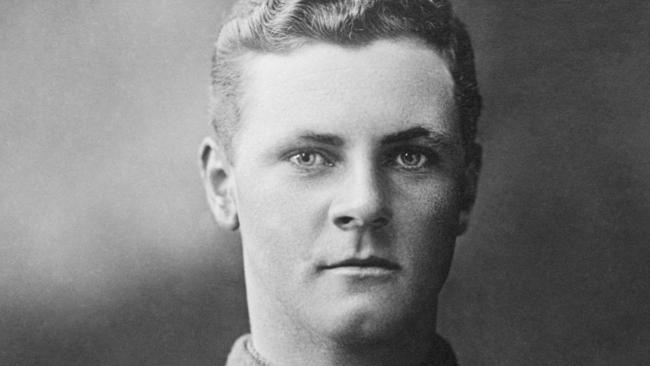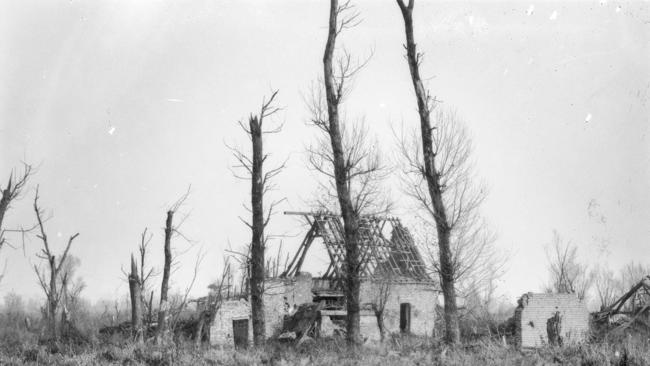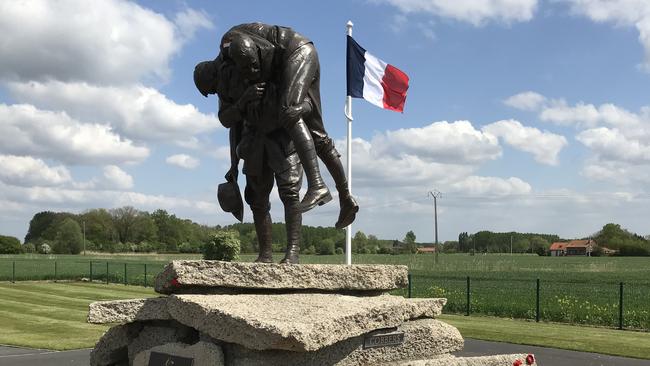Five Australian men killed on worst day in history have been identified
Five Australian soldiers killed on one of the worst days in Australia’s military history have been formally identified. See who they are.
National
Don't miss out on the headlines from National. Followed categories will be added to My News.
Exclusive: Five infantrymen killed on one of the worst days in Australia’s military history have been formally identified, as part of ongoing research into remains found in a mass grave in France.
They were among 1957 men killed, out of 5533 total Anzac casualties, during the disastrous assault on strong German positions at Fromelles in July, 1916.
Among the five was former teamster Private Maurice James Claxton, 24, whose brother Theodore was in the same unit – the 32nd Battalion – and who was wounded and taken prisoner in the chaos.
In a letter from captivity to their parents in Victoria, Theodore wrote of the action: “I don’t know where Maurice got to. We were together until we made the charge, when we got separated. I am getting treated all right here, but I will not be sorry when the war is over.”

The battle at Fromelles was the Australians’ first major engagement in France, following the Gallipoli campaign and just before the bigger push at Pozieres. Now described as “a bloody catastrophe” by the Commonwealth War Graves Commission, it swiftly became a disaster as soldiers advanced across open country into devastating German fire.
Despite some reaching the enemy forward trenches, the assault was hurled back, with dead and wounded left across the battlefield. Many were recorded as missing and never accounted for, some to this day.
In 2008 a new search at Fromelles uncovered large numbers of Australian and British soldiers, buried by the Germans behind their lines; 250 were reinterred at a new cemetery, called Pheasant Wood, and experts continue attempts to put names to those who were not identifiable.

Also newly identified, along with St Arnaud-born Claxton, were NSW Corporal William John Stephen, 28 – a grocer in civilian life – and dairy farmer Private Richard James McGuarr, 27; a 28-year-old milkman from Perth, Private Alexander Russell Robert Page; and 20-year-old South Australian Sergeant Oscar Eric Baumann, formerly a joiner.
Their identities were established with a range of evidence – including DNA from family members – collated by anthropologists, archaeologists and DNA specialists, analysed by the Australian Army’s Unrecovered War Casualties Team.
UK-based John Page, whose DNA helped identify Alexander Page, said he was “thrilled and elated” to have been able to assist clear up the mystery of what happened to his ancestor. “I am over the moon,” he added.

A total of 173 Australian soldiers have now been identified from the 250 at Fromelles. The five soldiers’ headstones will be rededicated on the 107th anniversary of the battle on 19 July 2023, along with those of two other soldiers, identified last November.
Announcing the identification of the five men, Minister for Defence Personnel, Matt Keogh, said of the men: “They made the ultimate sacrifice in the service of our nation in 1916, something we will never forget.
“For more than a century the families of these five soldiers have waited for news; that
wait is now over.”
Assistant Minister for Defence, Matt Thistlethwaite, visiting Fromelles ahead of Anzac Day, thanked the volunteers and Defence personnel who performed the identification, adding: “It’s an honour to be at the Pheasant Wood Military Cemetery to pay tribute to these brave soldiers on behalf of the Australian Government.”
More Coverage
Originally published as Five Australian men killed on worst day in history have been identified




